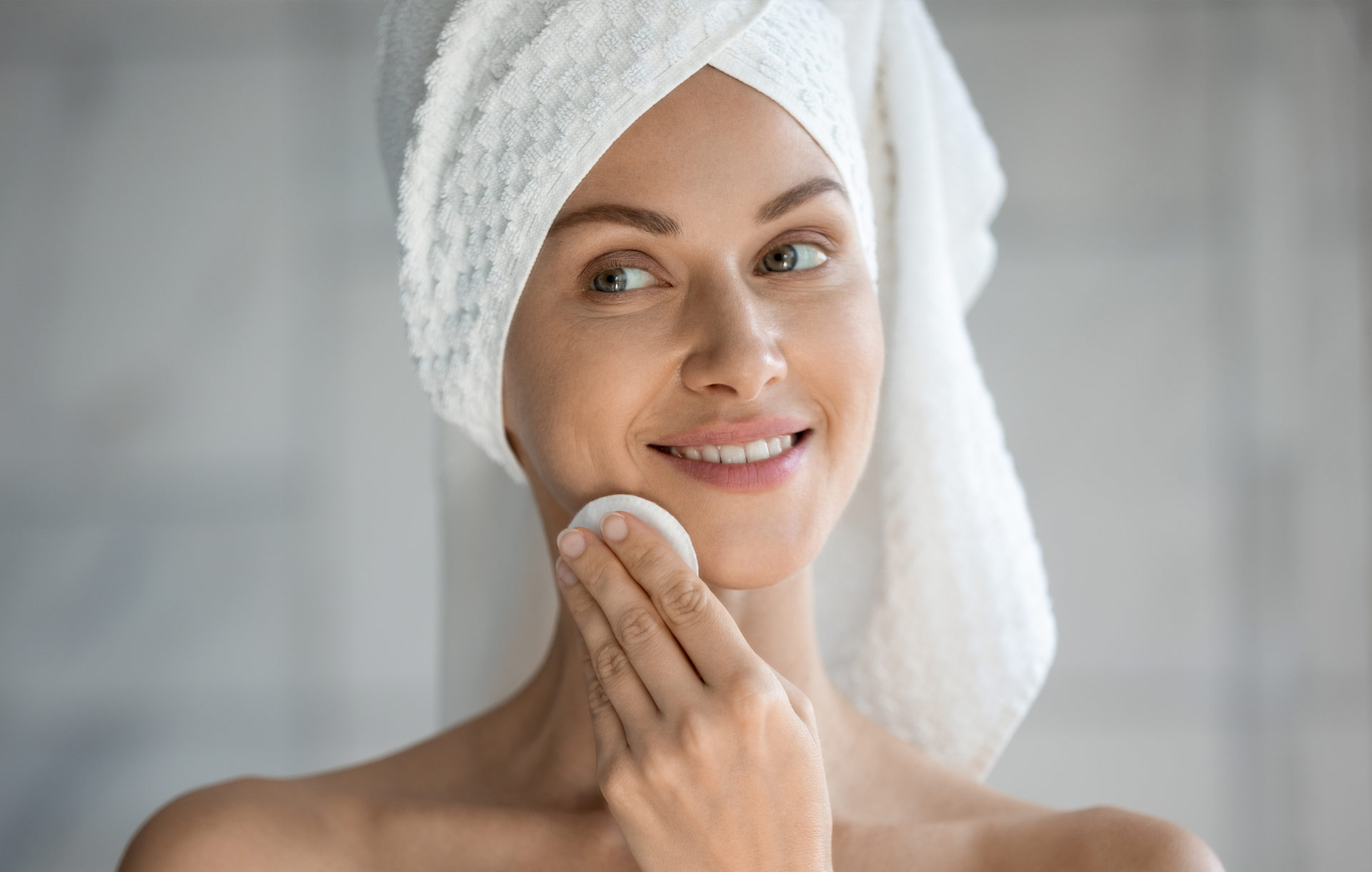How to reset the skin with oil cleansing
Oil cleansing is a popular skin cleansing method that originated in Asia in the 14th century. It consists of using an oil-based product to deeply cleanse the skin, followed by a water-based cleanser to remove any remaining traces of oil, makeup, and dirt. While this technique is great as a first step in removing makeup, that’s not all it’s good for. Oil cleansing can restore balance to a compromised skin barrier which will assist in the repair of many common skin concerns.
How it Works
Because the skin is made up of natural oils, such as sebum, many people use harsh cleansers to try and rid their skin of them. It’s a common misconception that oily skin types shouldn’t use oil in their skincare routines. The phrase “like dissolves like” is a perfect example of how oil cleansing can aid multiple skin types, including oily skin.
[ihc-hide-content ihc_mb_type=”show” ihc_mb_who=”2,4,6,7,5″ ihc_mb_template=”3″ ]
For oily skin, an oil cleanser will easily cut through excess oils without stripping the skin of the healthy amount, leaving the skin balanced and clean. For dry or normal skin types, oil cleansing will simply break down makeup and grime while leaving behind some needed moisture. Oil cleansing works for all skin types, even if that person doesn’t have a compromised barrier. This gentle method of cleansing is perfect for those with sensitive skin or makeup users.
Signs of Compromised Barrier
When someone strips their natural oils from their face, a plethora of problems can arise. A compromised skin barrier commonly shows up as acne or texture. Tight skin, flakiness, or scaly skin are also signs of a stripped barrier. Your client may also be complaining of redness, inflammation, or irritation in their skin. “Orange peel skin” is a great indicator that there has been damage to the skin’s barrier.
Excess oil production can also be an indicator. If your client is misusing physical or chemical exfoliants, a damaged skin barrier is almost guaranteed to occur. Oil cleansing is a fantastic way to reestablish equilibrium in the skin’s pH and return things to a normal, happy state.
When a Client Needs it
If your client shows any of the symptoms of a compromised skin barrier, educate them about how oil cleansing could benefit them. Clients with typically dry skin can gain greatly from incorporating an oil cleanse into their routine, and even switching just their first cleanse of the day to an oil can assist in keeping flakiness away.
Clients who regularly get chemical peels are no stranger to the peeling and tightness that comes with the healing process. Oil cleansing can actually help reduce the amount of peeling by softening the dead skin enough for it to fall off naturally!
Oil cleansing is an excellent method during colder winter months. Our skin loses more moisture in cold, dry weather and this can be combated by this less harsh practice. Similarly, hot and dry climates can trigger extreme dryness that may need more assistance with moisture retention.
What Happens During an Oil Cleanse?
When applying oil to remove makeup, the makeup will seemingly “melt” and become one with the oil. It works fabulously for stubborn eye makeup and will cut through waterproof mascara and thick sunscreens without a hitch. Once the oil is thoroughly massaged into the skin, many people choose to use a damp washcloth to remove the oil and makeup. Others simply rinse the oil before moving on to their water-based cleanser.
When using oil to simply cleanse the face (not to remove makeup) one might notice a skincare phenomenon known as “gritting.” This is when sebum plugs are able to be physically massaged out of the pores. These plugs are very small and can resemble tiny strawberry seeds! Removing these plugs will leave the skin smoother while allowing for the better absorption of other skincare products.
It only takes a few cleanses to notice a difference in the moisture levels of the skin. Oil cleansing can be used solely as a makeup removal technique, or as a staple in an everyday skincare routine. Because it works for all skin types and comes with a huge list of benefits, there’s no real downside to seeing if it’s right for your client.
[/ihc-hide-content]













